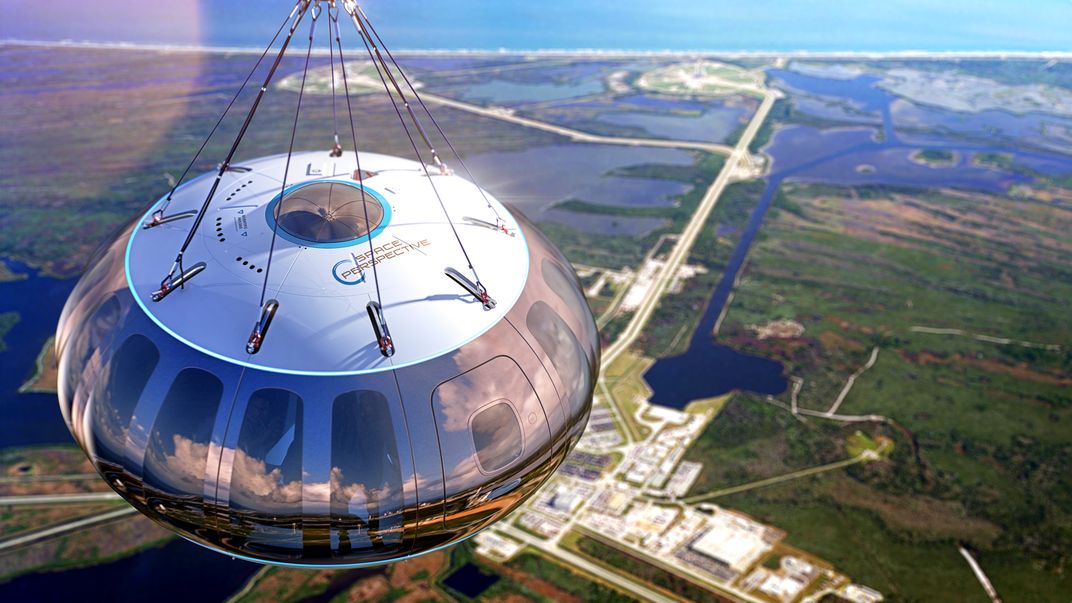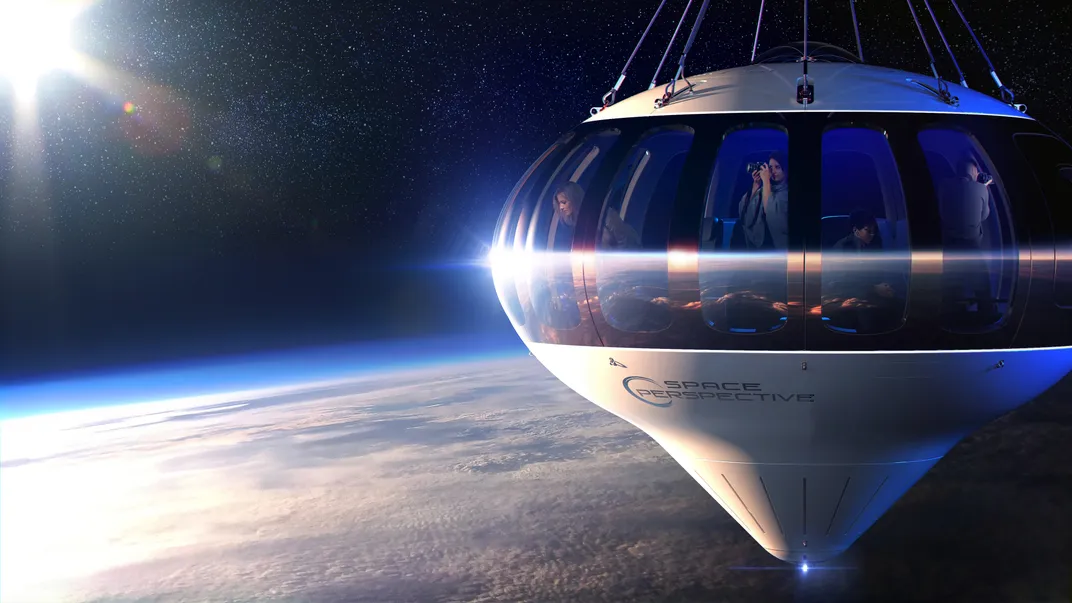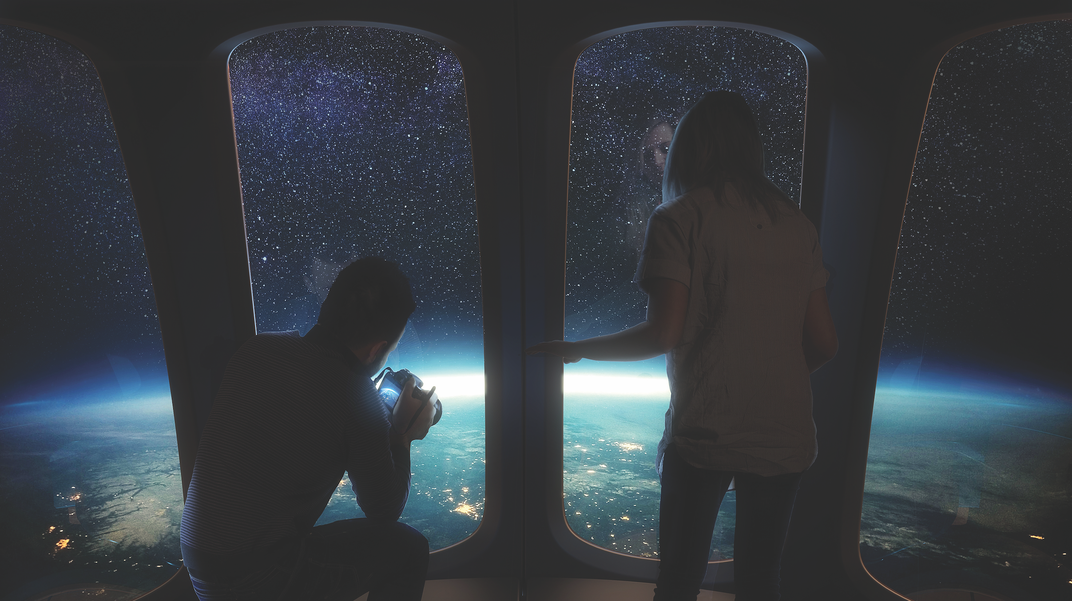For $125,000, You Could Ride a Balloon Into the Stratosphere
A new company, Space Perspective, announced its plan for a commercial space craft this week
:focal(1150x563:1151x564)/https://tf-cmsv2-smithsonianmag-media.s3.amazonaws.com/filer/aa/f0/aaf0332a-cc25-46d0-93f4-92cbd28b2ec1/screen_shot_2020-06-24_at_95954_am.png)
If you’ve ever dreamed of snapping a selfie, sipping a cocktail or even getting hitched while soaring through Earth’s stratosphere, you might be in luck. This week, a new company, Space Perspective announced plans to test out its commercial spaceship, “Spaceship Neptune,” beginning in early 2021. The company hopes to begin taking passengers into space in the next three years or so, reports William Hardwood for CBS News.
The ship, an enormous hydrogen-filled balloon with a small pressurized cabin hanging underneath, will carry research payloads, a pilot and up to eight paying civilian passengers into the stratosphere at a time, according to a statement.
The 650-foot-tall balloon will lift off from leased facilities at NASA’s Kennedy Space Center and gently rise to the stratosphere, about 19 miles above Earth’s surface—not technically outer space, but high enough to see the curvature of the Earth and the darkness of space stretching out beyond.
“It’s so gentle,” Jane Poynter, co-chief executive of Space Perspective, tells Kenneth Chang of the New York Times. “It’s much less dynamic than a rocket-based flight. I know that there’s a lot of people that either cannot or don’t want to go on a rocket, but they really want to go to space.”
The entire journey will take about six hours, the company estimates. The balloon craft will rise at about 12 miles per hour, cruise in the stratosphere for about two hours, then make its slow descent. It will float in the direction of that day’s winds, and splash down in either the Atlantic Ocean or the Gulf of Mexico, where it will be fished out by a recovery boat, reports Mike Wall for Space.com.
The cabin will feature bathrooms, a bar, seats, and enormous windows to take in the view, according to the statement. The team is already planning to facilitate events on the spacecraft, including a possible out-of-this-world wedding: Spaceship Neptune would be the “the best place to get married, ever,” Poynter tells CBS News.
“We’re committed to fundamentally changing the way people have access to space—both to perform much-needed research to benefit life on Earth and to affect how we view and connect with our planet,” says Poynter in a statement. “Today, it is more crucial than ever to see Earth as a planet, a spaceship for all humanity and our global biosphere.”
The giant balloon floats thanks to hydrogen, not helium. “Helium has become quite difficult to obtain,” says Poynter’s husband and the other chief executive, Taber MacCallum, during a press conference, reports Wall. “It’s used for a lot of medical practices and for launching rockets.” The cabin is reusable, but a new balloon will be needed for each trip.
Customers will still need to afford the tickets, which the company estimates will cost roughly $125,000 a pop. This pricetag is relatively cheap compared to the $250,000 price tag on a Virgin Galactic rocket trip, or the tens of millions of dollars that a handful of wealthy people have spent to visit the International Space Station.
Still, Space Perspective has a long way to go toward making its plans a reality. As Chang reports, many commercial spaceflight companies have made big promises over the years. But progress is slow, and the market remains relatively untapped.
Poynter and MacCallum planned to create a similar commercial space tourist flight with their company World View in 2013, but those plans never materialized, Chang reports.
/https://tf-cmsv2-smithsonianmag-media.s3.amazonaws.com/accounts/headshot/nora.png)



/https://tf-cmsv2-smithsonianmag-media.s3.amazonaws.com/accounts/headshot/nora.png)